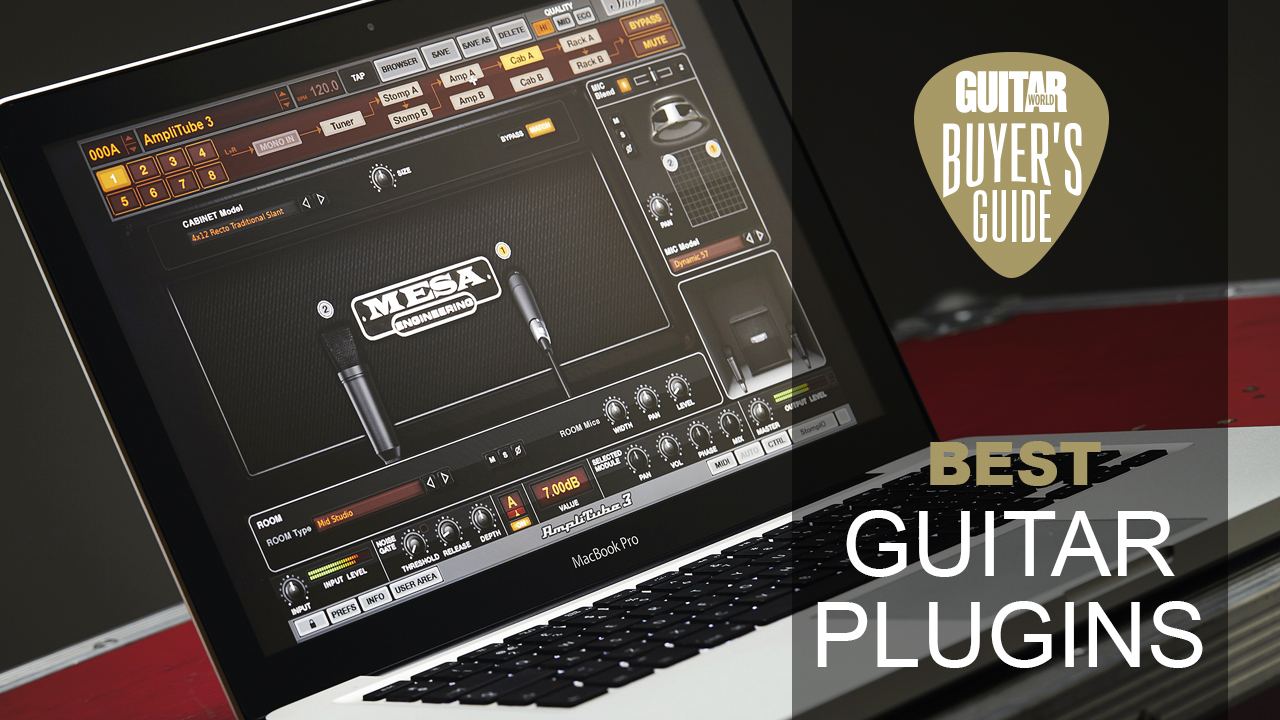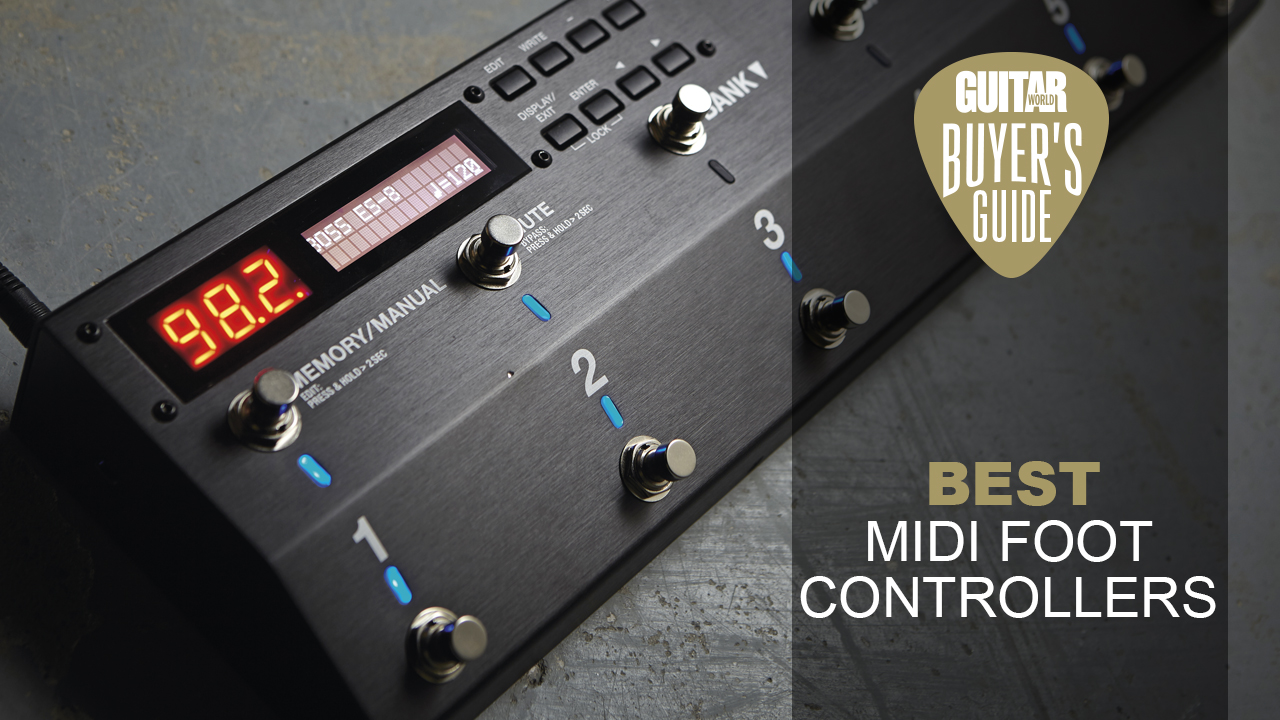Best bass guitars 2025: long and short-scale bass options for beginners to pros
Our pick of the world’s finest low-end monsters, with the best bass guitars from Fender, EBMM, Yamaha and more…

Bass players have it pretty sweet right now, with more high-quality offerings than ever before – making it the perfect time to pick up one of the best bass guitars. Whether you're seeking a thunderous five-string to bring the doom, a killer four-string you can slap around, or an understated classic, you'll be spoiled for choice.
The abundance of epic bass guitars does make it somewhat harder, though. So just how do you choose the right one for you? Well, luckily, we've done the hard work for you. We've searched high and low for the best bass guitars out there; some will be more affordable, and some will be pricey, but we've made sure to include basses for all budgets and playing styles. We've included basses from the likes of Fender, Music Man, Yamaha, and others, each offering excellent playability and great value within their price range.
We've included some expert buying advice at the end of this guide, so head there if you need more guidance. If you'd rather get straight to the products, keep scrolling.

Jonathan Horsley has been writing about guitars since 2005, playing them since 1990, and regularly contributes to publications including Guitar World, MusicRadar and Total Guitar. He uses Jazz III nylon picks, 10s during the week, 9s at the weekend, and shamefully still struggles with rhythm figure one of Van Halen’s Panama.
Best bass guitars: Quick list

The Classic Vibe Jazz Bass is based on those original ‘60s models, and Fender’s entry-level brand Squier will give you a supremely comfortable ride and some uncannily vintage tones and plenty of change from 500 bucks.

The BB435 nails that vintage-modern vibe, and like all great instruments it has a timeless quality, capable of holding its own in any company. Now, Yamaha does a very neat line in pro basses but this is an exceptionally priced instrument.

As the name suggests, the Tribute L-2000 is a replica of its Leo Fender-designed namesake that debuted in 1980. What blew minds then and still does is the switching system. There’s a trio of knobs, a trio of toggle switches, and a cornucopia of tone options to be had here.

The Stiletto Studio 6 challenges the notion that the six-string bass can feel a little intimidating, that it’s perhaps a niche instrument with an exclusive price tag to boot. Sure, a nut width of 54mm might be a struggle for some, but the neck’s thin C profile is shallow enough to ease you in.

The American Ultra's approach presents a more evolutionary than revolutionary approach to modernizing Fender’s top-line US-built instruments, and we think they found the sweet spot. This is unmistakably a P-Bass but with some very contemporary features.

No other bass can cover as much ground as the Ricky 4003S. Pick a genre, any genre, and someone somewhere will be plucking or slapping some epic vintage bass tones that fit perfectly. From funk, rock, punk, indie and heavy metal, the 4003S can still do it all.
Best on a budget

Specifications
Reasons to buy
Reasons to avoid
✅Buy if you are on a budget: For us, the Squier Classic Vibe '60s Jazz Bass offers players of any level superb value for money.
❌Avoid if you want a modern tone: While we love the sound of this bass, it isn't best suited for modern tones.
Say you were blindfolded and thrown into the bass section of your local music store and asked to retrieve the first bass you found, chances are you will return with something inspired by the Jazz Bass.
Since it was first introduced – disingenuously billed as the “two-pickup Precision” – in 1960, the Jazz Bass has inspired countless imitators, and has consistently been tweaked and revised by Fender through the ages. There’s a reason for this; the design looks cool and it works. The Classic Vibe Jazz Bass is based on those original ‘60s models, and Fender’s entry-level brand Squier will give you a supremely comfortable ride and some uncannily vintage tones and plenty of change from 500 bucks.
It’s a great deal. The tones are on-the-money as far as the Jazz Bass goes – thumping, in your face, but elastic and alive – and the controls that offer a wide sweep of tones.
Read the full Squier Classic Vibe '60s Jazz Bass review
Affordable 5 string
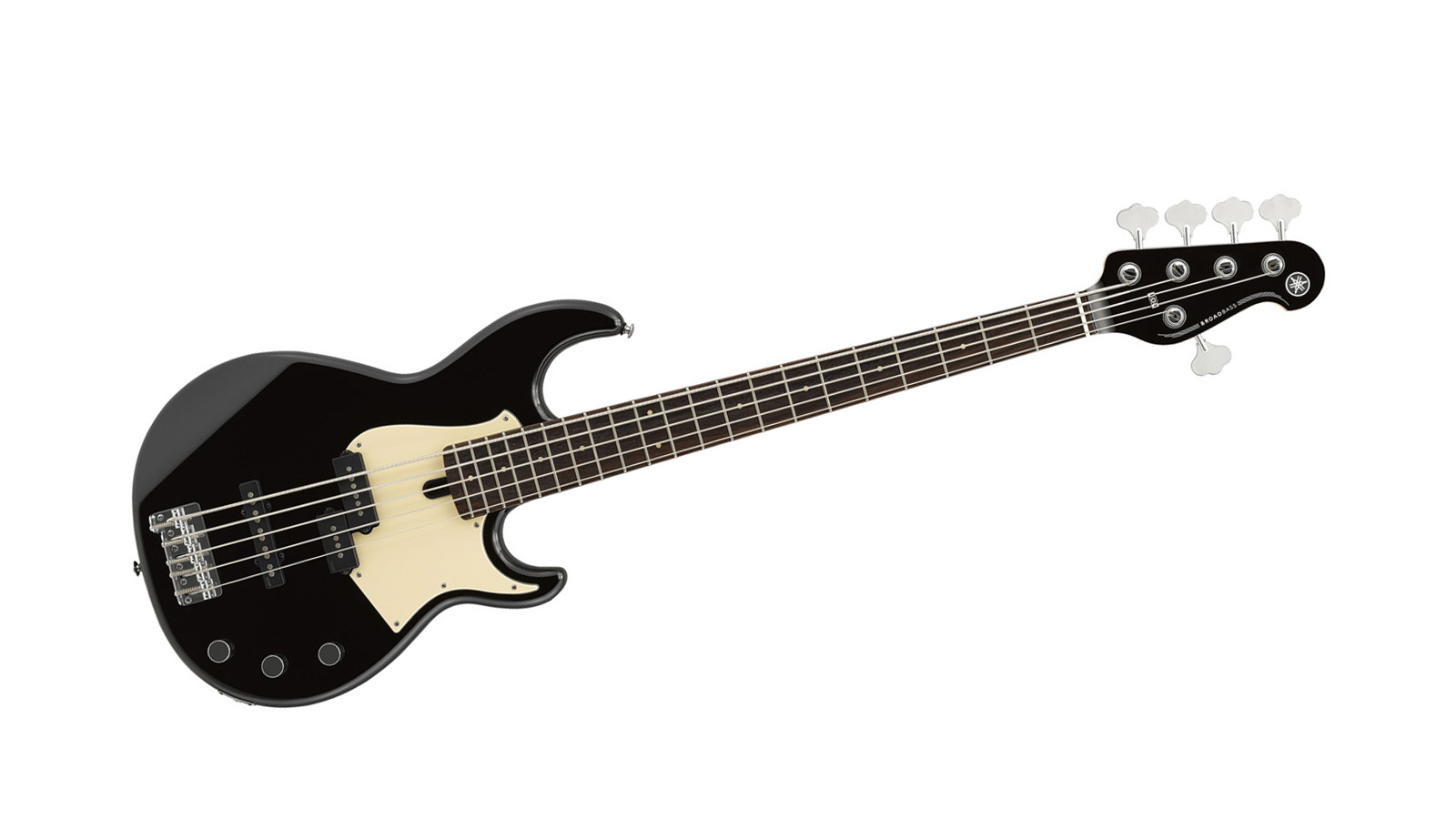
2. Yamaha BB435 Bass Guitar
Our expert review:
Specifications
Reasons to buy
Reasons to avoid
✅Buy if you want a versatile instrument: There isn't a genre this classic Yamaha bass can't do.
❌Avoid if you want a compact bass: As this Yamaha bass has a wide and flat body, it can feel pretty large to hold.
The BB435 nails that vintage-modern vibe, and like all great instruments it has a timeless quality, capable of holding its own in any company. Now, Yamaha does a very neat line in pro basses – the BBP35 is an exceptional top-line version of the BB435 that we’d recommend in a heartbeat – but this is an exceptionally priced instrument.
The BB435 is an absolute hoot to play, lively, dynamic, and it has a fuss-free control system where a master tone serves both pickups and you can adjust the balance via independent volume controls. There are certainly more detailed onboard EQ shaping options on a bass guitar, but few as simple or elegant.
The BB435 would make a superlative choice for any player looking for their first five-string. The low B string is tight. The build is exceptional throughout – this is a bolt-on but the six-bolt miter neck joint is so strong you might swear it’s a string-through. This allied to the clever 45-degree string-through bridge helps set the BB435 apart.
Best for versatility

3. G&L Tribute L-2000
Our expert review:
Specifications
Reasons to buy
Reasons to avoid
✅Buy if you want a studio companion: As this bass offers a wide range of tones, it's the perfect model for studio use.
❌Avoid if you want to keep it simple: Not going to use all the switches? Well, in that case, you'll want to look elsewhere.
As the name suggests, the Tribute L-2000 is a replica of its Leo Fender-designed namesake that debuted in 1980. What blew minds then and still does is the switching system. There’s a trio of knobs, a trio of toggle switches, and a cornucopia of tone options to be had here – toggle between active and passive modes, between neck, middle or both humbuckers, and series/parallel mode. This jemmies open the sonic possibilities even before you get to the two-band EQ.
If the switching and EQ controls seem a little esoteric at first – and you’ll have a fun time finding the sweet spot – the performance of this modestly priced four-string puts it firmly in the workhorse category.
The hardware won’t let you down. The Saddle-Lock bridge is a Leo design, neat, sturdy, and a solid platform. The tuners are open-backed, old-school. But it’s the pickups and electronics that people will ask you about after the show. Those US-made G&L MFD humbuckers are overwound with a ceramic core and they’re powerful. And they’ve got individually adjustable pole pieces, just in case the switches and EQ didn’t present enough choice.
Best six-string bass
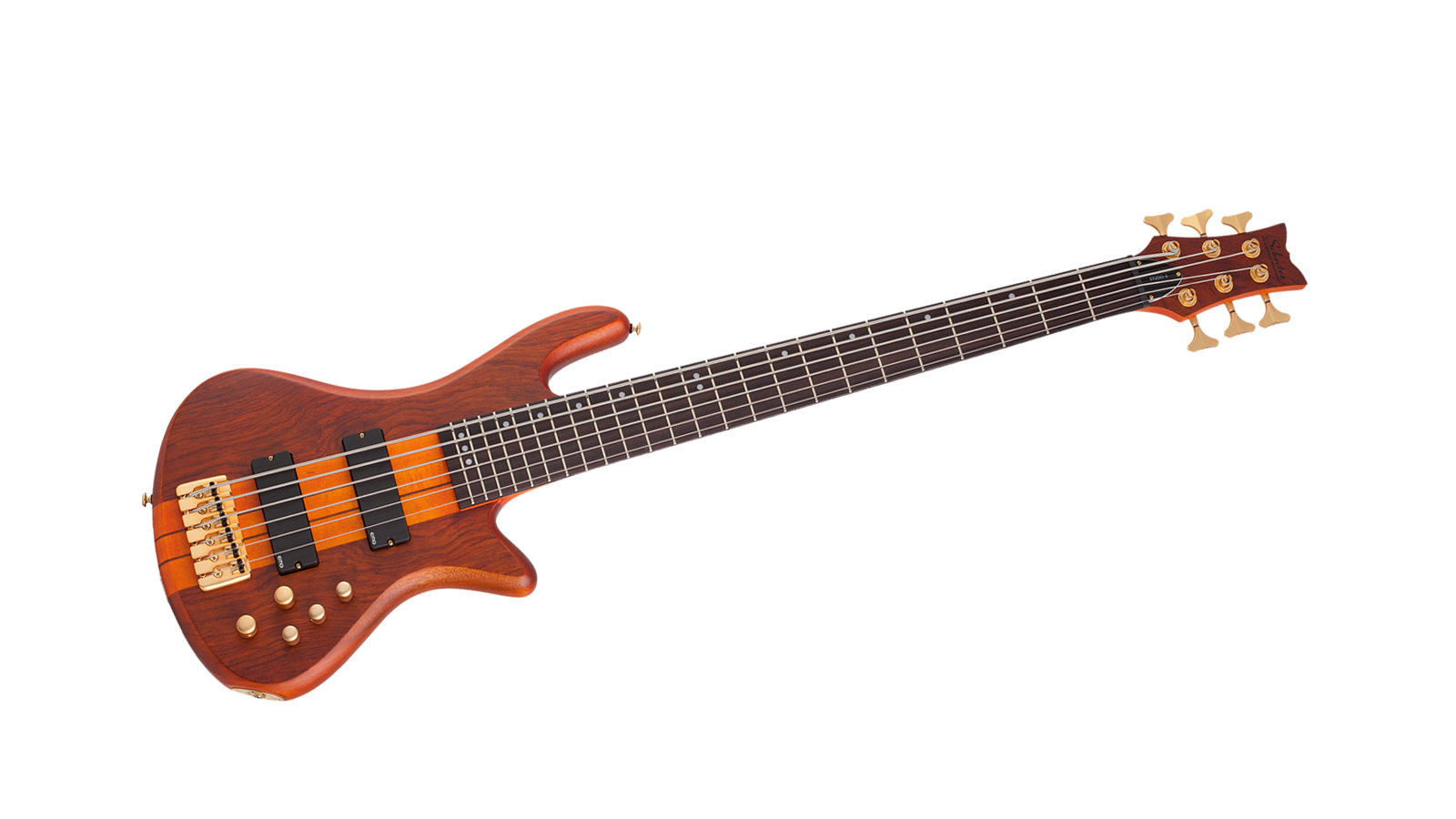
4. Schecter Stiletto Studio 6
Our expert review:
Specifications
Reasons to buy
Reasons to avoid
✅Buy if you want the ultimate six-string: When it comes to great-sounding six-string basses that offer superb value, our pick is the Schecter Stiletto Studio 6.
❌Avoid if you don't need the extra strings: Six-string basses aren't for everyone, so if you are looking to keep it traditional, then there are better models available.
The Stiletto Studio 6 challenges the notion that the six-string bass can feel a little intimidating, that it’s perhaps a niche instrument, with an exclusive price tag to boot. Sure, a nut width of 54mm might bring tears to an avowed four-stringer’s eyes, but the neck’s thin C profile is shallow enough to ease you in and help adjust to all that extra fretboard territory.
What will you use it for? Well the six-string format makes possible all kinds of progressive and outré jazz-funk styles, and the EMG 45Hz humbucker pairing and comprehensive 3-band EQ let you dial in pretty much whatever you want. Scoop the mids for some effervescent slap, or boost them and the treble for some really up-front, bass-as-a-lead instrument tones.
The extra jumbo frets reward a light touch and the neck-through build, which sees the neck dissolve into the body, leaves a heel that offers zero resistance to your reaching the summit of that fretboard. The build quality is what we would expect from a South Korean Schecter, i.e. tip-top, and it ain’t light but the balance feels pretty much bang on.
Best high-end bass

Specifications
Reasons to buy
Reasons to avoid
✅Buy if you want a very smooth feel: The neck on this Jazz Bass is up there with the best we've ever played.
❌Avoid if you are on a budget: This is a top of the line bass, so if you are on a budget you may wan't to look at the Performer or Player range.
The American Ultra Series’s approach presents a more evolutionary than revolutionary approach to modernising Fender’s top-line US-built instruments, and we think they found the sweet spot. Take this Precision Bass. It is unmistakably a P-Bass; the classic silhouette is present and correct. You’ve got a choice of an alder body or ash, retro pick-guards in three-ply mint green or 4-ply tortoiseshell.
But with a new Modern D neck profile, the 10-14” compound radius fingerboard, HiMass bridge, lightweight tuners and a newly designed preamp, it’s an altogether more contemporary proposition.
The American Ultra body is also more heavily contoured across the back, with a newly sculpted heel allowing a free pass to the upper frets. The Ultra Noiseless pickups are an excellent pairing also, with the punchier Vintage Jazz single-coil in the bridge position offering a nice counterpoint to the rounded warmth of that middle position split-coil.
It ain’t cheap but the smart new finishes, the player-friendly amendments (improvements?) to an all-time classic and the tones are worth it.
Read the full Fender American Ultra Precision Bass review
Best for vintage tones

6. Rickenbacker 4003S
Our expert review:
Specifications
Reasons to buy
Reasons to avoid
✅Buy if you want a vintage tone: The Rickenbacker delivers a very unique vintage tone that is instantly recognizable.
❌Avoid if you need modern voicings: Yes the Rickenbacker sounds amazing, but the bright tone isn't for everyone.
No other bass can cover as much ground as the Ricky 4003S. Pick a genre, any genre, and someone somewhere will be plucking or slapping some epic bass tones that fit perfectly. From funk, rock, punk, indie and heavy metal to the extremes of metal, the 4003S can do it all.
Despite its versatility, the Ricky actually has a very distinctive sound that’s epitomized by the neck pickup, which when played aggressively punches harder than Oleksandr Usyk having a hissy fit. It also has a reputation for clarity, a trait that helps the 4003S to cut through the densest of mixes. What’s more, stereo output provides even further opportunity for creative tone shaping.
Lemmie, Geddy Lee, Chris Squire and Paul McCartney are all famous Rickenbacker players who have managed to coax (or bully) very different tones from their basses, while still sounding recognisably ‘Ricky’.
Frankly, the 4003S isn’t everyone’s cup of Lapsang Souchong, but bassists who become smitten will go to the ends of the earth and beyond to buy a good one. Which is just as well, because the 4003S is made in small, seemingly inconsistent batches, which plays havoc with both supply and pricing.
If you see one you like at a good price, grab it quick.
More options...
So those are our top picks, but there are may more great options to choose from that offer something a little different in terms of features and performance. We've selected some more of our favorites below.

7. Gibson Standard SG Bass
Our expert review:
Specifications
Reasons to buy
Reasons to avoid
✅Buy if you want a short-scale bass: Looking for a more manageable bass? Well, look no further than the Standard SG.
❌Avoid if you don't like short-scale: If you find short-scale basses to be too cramped, then you'll want to avoid this one.
Why should you play an SG? Because it’s the bass that Jack Bruce reached for when performing live with Cream. Jack wasn’t just a blues and rock player, he also fused a lot of jazz into his playing with Eric and Ginger, so he needed an instrument that could cross multiple musical frontiers with ease. He also wanted a bass with a deep, powerful tone, a role the short-scale mahogany SG was born for.
Not convinced? Well, you should also play an SG because it was a favorite of virtuoso bass player Mike Watt of Minutemen and Firehose fame. Just like Jack, he’s adept at navigating his way through multiple musical genres, notably punk, metal, funk and, of course, jazz. The SG proved to be the perfect companion.
Strictly speaking, they both played the early EB3 model, which, with its cluttered and complex Varitone system, could be unreliable. It wasn’t the slickest looking bass at the time either. Fortunately, today’s Standard SG Bass drops that system in favor of a much cleaner aesthetic. It still has two richly-voiced pups with individual volume controls, so there’s plenty of sonic versatility on tap, and it’s competitively priced.
Just like the SG guitar, the body shape will always divide opinion. Its short scale length does make it an attractive proposition for smaller players though.

8. Fender Aerodyne Special Jazz Bass
Our expert review:
Specifications
Reasons to buy
Reasons to avoid
✅Buy if you want a modernized Fender: This contemporary Jazz Bass delivers modern tones and playability.
❌Avoid if you want a classic Fender: Looking for that iconic Fender tone and feel? Well, you may get on better with a vintage reissue model.
Funny how time works isn’t it? Even now, after all these years, figuring out Einstein’s theory of relativity still makes our temples hurt, but we are sure of one thing – things ain’t what they used to be.
When Leo launched his Jazz Bass in 1960 it was even more futuristic than someone from the future could design (looking at you, 1961 Gibson SG Bass). Based, if you’ll excuse the pun, on the slightly earlier Jazzmaster, it was all swoopy offset curves, shiny chrome, enhanced electrics and thin-neck loveliness. Sometime between then and now though, it became a classic that we now think of as rather traditional. How did that happen?
Fender, realizing this a couple of decades ago, responded with the Japanese-made Aerodyne Jazz Bass, which has just been further refreshed – future-proofed, if you like – with the even more futuristic 2022 Aerodyne Special.
Comparing the Special side-by-side with the ‘60s original, out goes the pickguard and control plate, and in comes a pair of custom voiced Aerodyne Special Jazz Bass single coil pups. The silhouette is broadly the same, but the body is slimmer and, quite literally, more edgy.
A travesty of design? Not at all. The Aerodyne Special, in Dolphin Gray or California Blue, is a pared-down, minimalist triumph. Obviously, it’s unlikely to appeal to traditionalists, which is why the new pups, though vintage-voiced, are clearly capable of a contemporary growl and the Babicz Z-series bridge is a distinctly modern touch.
If you value purity of tone and line, this one’s for you. Admittedly, the Chocolate Burst does look a bit incongruous.
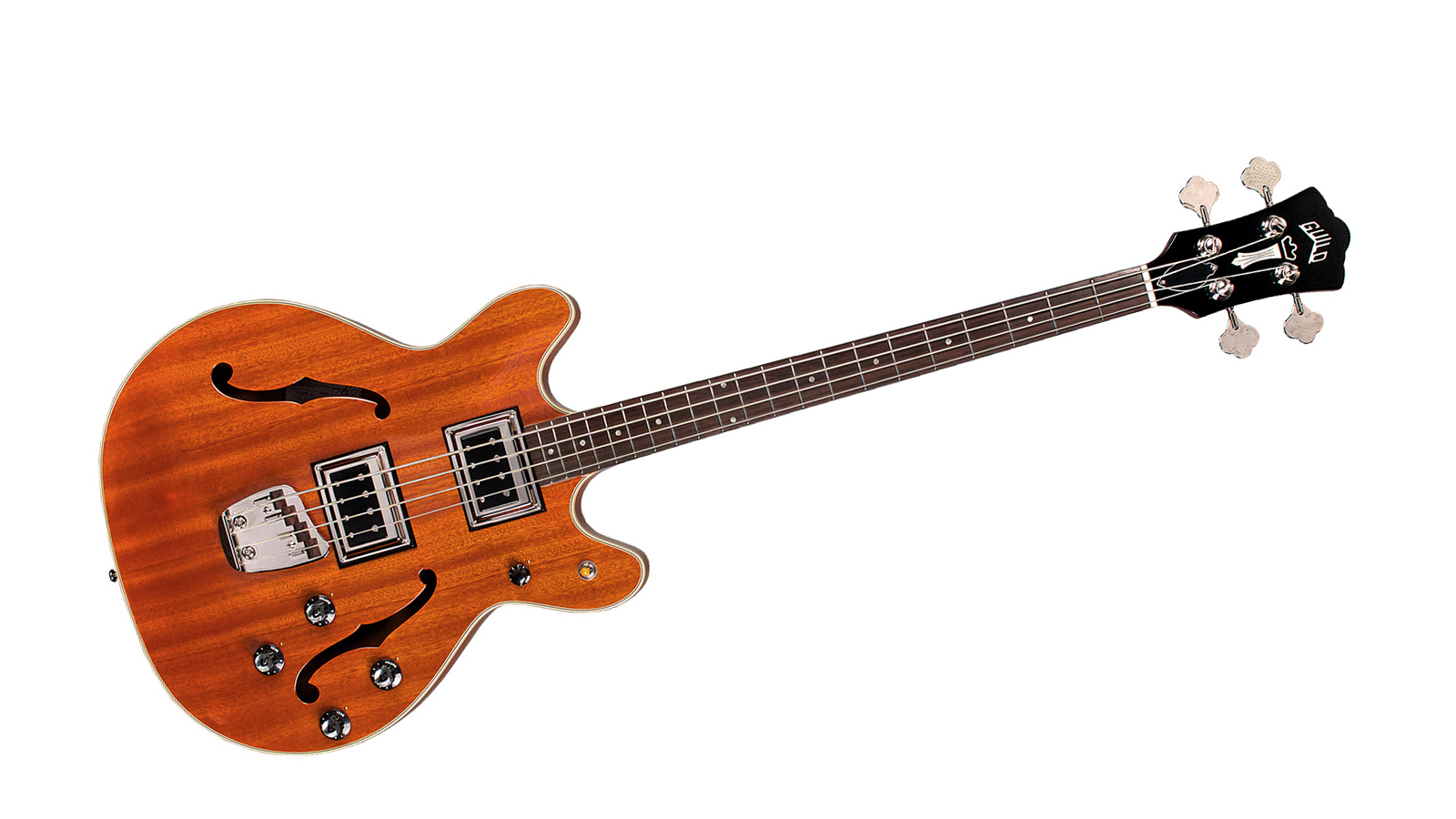
9. Guild Starfire II Bass
Our expert review:
Specifications
Reasons to buy
Reasons to avoid
✅Buy if you want a semi-hollow bass: If you are seeking the woody tone of a semi-hollow instrument, then this Guild is a superb choice.
❌Avoid if you play with lots of gain: If you like to play with a lot of distortion, this isn't the bass for you.
Stick some late-’60s psychedelic vinyl on the turntable, lie back and listen. What kind of bass is laying down that warm, rhythmic/melodic foundation? We promise you it’s gonna be a hollowbody of some kind, most likely a Starfire (unless you’re listening to Macca).
If you were into psychedelic rock at the time, then the Guild Starfire was the four-string to sling in the back of your brightly painted tour bus. Jack Casady of Jefferson Airplane, Phil Lesh of the Grateful Dead and Chris Hillman of the Byrds all loved variations of this Guild for its fat, woody, organic tone.
Guild has undergone many ownership and management changes since those halcyon days, but the Starfire is back. Guild’s current product team raided the company’s archives to make sure that their single-pickup Starfire bass was as authentic as possible before then launching the double-pup Starfire II, which in our opinion is the pick of the duo.
This slimline is loaded with two period-inspired BS-1 BiSonic Alnico 2 pickups, wound to 6.4K resistance, that blesses it with the same ’60s vintage tone as the original. Its short scale length and laminated mahogany hollow body also give the resonant Starfire a very distinctive, harmonically-rich sound that’s markedly different to a solid body bass. Woody, organic, rich and smooth are the obvious adjectives, yet it can growl with ferocity when provoked.
Doesn’t that hollowness generate a whole lot of feedback at volume? If you’re worried about wailing of the kind that would shame a banshee, don’t be – the Starfire has a solid block running the length of its body, so it’s not an issue.
The Starfire isn’t an obvious choice, but it is a solid one. Kind of. Oh, you know what we mean…

10. Ernie Ball Music Man StingRay Special 4 HH
Our expert review:
Specifications
Reasons to buy
Reasons to avoid
✅Buy if you want humbuckers: The powerful tone of the Stingray is legendary and for good reason, this bass rocks.
❌Avoid if you want a subtler tone: This is a powerful bass and it can lack finesse.
Since its introduction in 1976, the Music Man StingRay has come to define the company’s bass-making. It is the most-recognisable model – well, the Bongo might be more of a head-turner, but this is the one that made it famous.
As with all of the designs that Leo Fender had a hand in, there is an understated brilliance and a sense of practicality – and it’s a bolt-on construction, too. Hey, when you get it right first time, why change? Now, the StingRay does not come cheap but that outlay goes into the fine details; the stainless steel frets, the compensated nut, the finish, the wood choice, and the pickups and electronics.
Here you can pretty much do anything. You’ve got a pair of redesigned humbuckers, an 18-volt preamp and 3-band EQ for some of the fattest bass tones you could imagine, or some of the sharpest, or with a midrange upper-cut that could draw blood. The StingRay welcomes all styles. Its neck is on the fat side but make no mistake, this plays perfectly.

11. Warwick German Pro Series Thumb BO 5-String Bass Guitar
Our expert review:
Specifications
Reasons to buy
Reasons to avoid
✅Buy if you want a good bass for metal: The active MEC J-style pickups make this a fabulous bass for heavier styles of music.
❌Avoid if you don't like active pickups: If you aren't a fan of the compression of active electronics, we'd suggest you look elsewhere.
People often talk about the Warwick growl and, really, it is officially a thing and a joy to behold. There’s an upfront, pugnacious quality to the active MEC J-Style pickups that, should you turn it up loud enough, will deliver all the thunder you need for rock settings.
But the Thumb is a triumph of modern bass design that plays the percentages. Some might decry the 2-band EQ – many players want explicit control over the mids and that’s cool – but if you think of the balance control between both pickups as an auxiliary mids control you will find all the control you need. There is also a push-pull on the volume control to bypass the active electronics for another range of passive tones. Very cool.
The build is exceptional, as you’d expect from Warwick’s Teambuilt Pro Series, and the balance between the long-scale neck and compact, ergonomic body is really a kind of magic.
Oh, and the body and neck is ovangkol – a sustainable tonewood introduced by Taylor that sounds somewhere between rosewood and koa – and the BO of the name stands for bolt-on. So yeah, there really is no need to keep your distance.
Best bass guitars: Buying advice

How to find the best bass guitar for you
You can trust Guitar World
Knowing where to start when finding the best bass guitar for you can be a pretty daunting task. There are many factors to consider, especially if you’re looking for a beginner bass guitar to start your bass playing journey on. Here are some of the most important things you’ll need to decide on, before you go looking for your brand new bass guitar.
Long scale vs short scale bass guitars
You'll first need to decide whether you want a long or short scale bass guitar. The scale – or scale length – of an instrument is the distance between the bridge and the nut, and we use it to measure the total playable length of the instrument.
A long scale bass has a scale length of 34", and the long scale bass is considered to be the industry standard. As a result, you'll have more options when it comes to purchasing a bass. Those used to playing smaller instruments, or just smaller people in general, may prefer a short scale alternative, however.
A short scale bass will usually have a scale length of 30", meaning the neck is shorter and the frets are closer together – making the instrument generally easier to play. This also means that the string tension is lower, which aids playability too - but means that the tone is generally warmer and more 'bassy'. The versatility of your short scale bass will take a hit because of this too.
That being said, first and foremost it's really important to find a bass that feels comfortable and fun to play. Make sure it's the bass you never want to put down – as there's no point worrying about the future prospects of your bass playing if you don't like playing it in the first place!

What is the difference between a passive and active bass guitar?
Put simply, passive basses have no onboard preamp and so their output is generated 100 percent by their bass pickups – think about a vintage-style Fender P-Bass/ Jazz Bass.
The active bass has an onboard preamp, typically powered by a 9V or 18V battery. This preamp boosts the pickup’s signal and the bass’s EQ can be used to cut or boost frequencies. The controls on a passive bass can only attenuate the master tone and volume of the instrument, whereas on an active bass you can have a little more control over your tones with a 2- or 3-band EQ.
There are other differences, too. The onboard preamp of active basses can compress your tone slightly – great for more aggressive styles of music such as metal, or hard rock – whereas those dynamics remain up for grabs on a passive bass.
As to which is better, there is no real right or wrong answer, although people will argue that point. Whatever sounds best to you is best, and that’s the end of it – and we'll have no arguing, thanks.
Four-string vs five-string vs six-string
For a lot of people – especially new bassists – four strings is enough. For honing your chops, and getting used to the larger size of the bass guitar, the standard four-stringed approach is what we'd suggest you go for.
Four-string basses are happily capable of any style of music, from jazz to thrash metal - but if you'd like to branch out into the world of extended range, then five and six-string basses are definitely worth your time.
A five-string bass will afford you an extra low string. In standard tuning, this is a low B, and will allow you to explore a deeper, darker tonality. The five-string bass is still fairly mainstream and found in many styles of music, as it's capable of everything a four string can do, and then some. The downsides of the five-string are that the fretboard must be wider to accommodate the extra string, and that a 5-string set of bass strings can be pretty expensive – so if you find skinny necks super comfortable, or have smaller hands, then we'd recommend sticking with a four-stringed companion.
If five strings aren't enough, then six-string basses, in standard tuning, will provide one extra low string and one high string, in the form of a low B and high C. Compared to a four or five string bass, the available selection of six-strings is much less - and is generally focused in the high-end category. The necks are wide, and can be a little unwieldy for some, but the tonal range is hard to beat.

Which tonewood is best for bass guitars?
When it comes to which wood your new bass is made of, there are so many different options available to you. Bass manufacturers have been some of the early adopters of alternative tonewoods to the ash/alder/mahogany paradigm. Obviously, these standard wood types are popular for a reason, but the more exotic choices such as ovangkol, bubinga, and panga panga each offer their own frequency response and tonal characters. So it’s worth trying a few out to see what is right for you.
So which of these basses should you buy? Well, the only person able to answer that question is you. When you pick up a bass for the first time, it will speak to you. It should make you want to play constantly, and never put it down - that’s when you know you’ve found the best bass guitar for you.
How we selected the best bass guitars
Here at Guitar World, we are experts in our field, with many years of playing and product testing between us. We live and breathe everything guitar related, and we draw on this knowledge and experience of using products in live, recording and rehearsal scenarios when selecting the products for our guides.
When choosing what we believe to be the best bass guitars available right now, we combine our hands-on experience, user reviews and testimonies and engage in lengthy discussions with our editorial colleagues to reach a consensus about the top products in any given category.
First and foremost, we are guitarists, and we want other players to find the right product for them. So we take into careful consideration everything from budget to feature set, ease of use and durability to come up with a list of what we can safely say are the best bass guitars on the market right now.
Read more about our rating system, how we choose the gear we feature, and exactly how we test each product.
Related buyer's guides
- Best budget bass guitars: our top picks under $500
- Our pick of the best 5-string bass guitars
- Enhance your sound with the best bass effects pedals
- Work on your chops with the best bass amps for practice
- Best basses for metal from Warwick, Schecter, Ibanez and more
- Need an amplifier with that? These are the best bass amps around
- Here is our pick of the best gifts for bass players
- Thicken up your low end with the best distortion pedals for bass
Get The Pick Newsletter
All the latest guitar news, interviews, lessons, reviews, deals and more, direct to your inbox!
Jonathan Horsley has been writing about guitars since 2005, playing them since 1990, and regularly contributes to publications including Guitar World, MusicRadar and Total Guitar. He uses Jazz III nylon picks, 10s during the week, 9s at the weekend, and shamefully still struggles with rhythm figure one of Van Halen’s Panama.
“Affordable versions of the three best basses I've ever held in my hands”: Sterling by Music Man completes its trilogy of Joe Dart signature models with a trio of made-to-order basses that cost less than $500
“The ace up the sleeve of bass players around the globe since 1978”: Tobias instruments were trailblazers in the bass world. Now they’re back as part of the Gibson family

